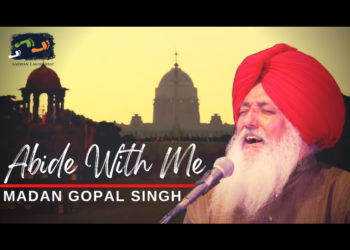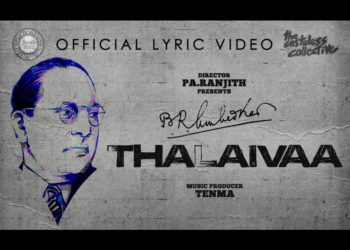All around the world, the 550th birth anniversary of Guru Nanak is being celebrated not only by the Sikh community but by all who are inspired by the wisdom and life of the first of the Sikh Gurus.
Bhai Baldeep Singh is not only a dedicated singer of Gurbani, he is also credited with working to revive the tradition of the stringed musical instruments – the rabab, taus, sarandā, dilruba, tamburni (tanpura), jori and pakhāwaj – mridang. He shares the story of his inspiration and training under master-luthier Giani Harbhajan Singh.
Reviving Guru Nanak’s Rabab 550 Years after His Birth
— Shalim M Hussain
The “rabab”, a lute-like plucked instrument, occupies a very significant part in Sikh music. Played by Baba Guru Nanak (1469-1539) himself, it is part of the long-lost Rababi tradition of Sikh music. Bhai Mardana (1459-1534), who was Guru’s constant companion throughout all his journeys, is supposed to have played the rabab in accompaniment to Guru’s singing. Mardana belonged to the Mirasi community, a caste of Muslim bards.
The Rababi tradition, an integral part of Gurbani sangeet, did receive royal patronage, but by the 19th century, the tradition slowly died out. The instrument was played and made popular in the country by a number of Bhakti saints like Kabir Das (1440-1518), Namdev (1270-1350), Ravidas (1398-1540) and Guru Nanak himself.
There exists a popular legend about the origins of the Rababi tradition, often narrated by noted luthier and classical vocalist of contemporary times, Bhai Baldeep Singh. Once when Guru was in his phase of “renunciation”, he instructed Bhai Mardana to get Bhai Firanda, famed rababi and carpenter of the time, to make a rabab for him. Firanda refused payment for the rabab as soon as he learnt that Guru had commissioned it and asked Mardana to take him to the saint instead. Firanda’s devotion for Guru was so strong that he walked barefoot from his village Bharo-ana and placed the rabab at Guru’s feet. This rabab is supposed to have travelled with Guru Nanak and Bhai Mardana on all of their journeys.
Bhai Baldeep Singh is on a mission to revive all the instruments that were used during the times of the Sikh Gurus and the rabab is one of the instruments he is trying to restore into the music of “Gurbani kirtan”. Part of a glorious tradition of Gur-Sikh masters and a member of the 13th generation of “ragis” or musicians whose origins can be traced back to the time of the Sikh gurus, Baldeep says that the mission has been as though seeking hidden knowledge from his own dead ancestors. In an interview with Karwan-e-Mohabbat, the singer said, “I went knocking on all the graves, saying, ‘O’ ancestors, would you tell me something? Will you let something fall on my lap?’ They would let some wisdom slip and I would be grateful like an accepted lover.”
Baldeep Singh personally handcrafts the rababs under the guidance of master luthier Gyani Harbhajan Singh. The making of traditional musical instruments like the rabab is an arduous process, starting with the right selection of wood (in the case of the Indian rabab, Indian toona wood is usually used), cutting it to the proper size (the Indian rabab is longer than the Afghan rabab) and seasoning and fine-tuning it.
On the occasion of the 550th birth anniversary of Guru Nanak, Bhai Baldeep Singh plans to carve a special rabab dedicated to the Guru. Given its history and use in the musical tradition of the Indian subcontinent and Central Asia, the rababi tradition is a syncretic blend of Indo-Persian and Arabic traditions. “When we look for the origins of our culture, we see that it cannot be found in one single thread or one single colour,” says Baldeep Singh.




